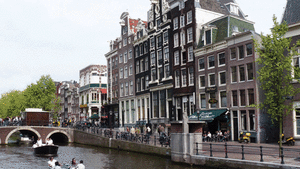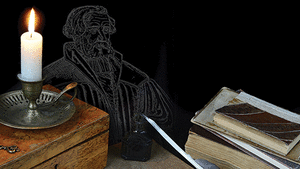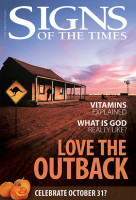Christians commonly dismiss Halloween as a pagan festival. However, there IS something worth celebrating on that day.
The last day of October is generally a source of delight for both children and retailers alike. (The two often go together.) “It’s Halloween!” is trumpeted from many a store window, accompanied by costumes of witches, goblins and other ghoulish garb. Pumpkins with hollowed-out faces, some with gruesome grins and others with scary faces, appear everywhere. Why? And where did this come from?
In times past, the Celts had an annual celebration on the evening prior to the feast of Samhain—a festival that marked the end of the old year and the commencement of a new one. It may have meant “summer’s end,” when crops were gathered in for the coming winter.
As Christianity grew across the world in the centuries after Jesus’ death, it became an authorised state religion under the Roman Emperor Constantine. With its official status and growing influence, the Christian church endeavoured to eradicate pagan concepts and practices from the realm.
However, it was often easier to simply replace sacred pagan days with Christian practices. In particular, the Celts held on to the feast of Samhain, traditionally celebrated at the end of October and the beginning of November, so the church adopted this as All Saints’ Day.
Legends and Practices
Mixing pagan and church doctrine, twelfth century practitioners believed that the souls of dead people roamed the earth until All Saints’ Day—November 1—and the evening before, called All Hallows’ Eve, provided them with a final opportunity to avenge themselves on their enemies before entering the next world. People also believed that these souls of the wandering dead would recognise them, so they disguised themselves with masks and costumes. This is no doubt the origin of today’s custom of children wearing costumes and masks when they go trick-or-treating.
All Hallows’ Eve, or All Hallows’ Evening, eventually became shortened to Halloween, and thus it came to be associated with witches and ghosts.
Other legends and practices say that from October 31 until the first or second day of November, it was almost like time was abolished. People dressed crazily and pranks—harmless or otherwise—were often performed.
The use of pumpkins with lights inside to give a garish effect also developed. Some attribute this to the Scottish and Irish practice of carving turnips into lanterns. North Americans used pumpkins, with references to the practice going back to at least 1837.
The noted Scottish poet Robert Burns wrote about Halloween in 1785. In modern times, films such as Frankenstein and Scream have been used to capture the horror of Halloween.
The trick-or-treating now practised by many children in Western countries originally came from the ancient interpretation of “trick” to mean threat: give us something or we will perform something to cause you a nuisance or pain.
An Event Of Epic Proportions
The images that connect Halloween with death, evil and the occult cause many Christians to question the practice. For them, there is another event to commemorate that did actually occur on October 31.
The year was 1517. A devout German monk had been searching Scripture, seeking a more loving God. Disgusted by the practices of the day, he’d become convinced that his religious beliefs shouldn’t be exploited for fundraising, with indulgences sold on the open market, to fund the construction of a new basilica in Rome.
Another monk, Johann Tetzel, had been commissioned by the bishop of Mainz to offer the forgiveness of sins through the payments of money, or “indulgences.” Martin Luther was disgusted with the practice and when Tetzel arrived in Germany, Luther’s home country, pedalling his wares, Luther took issue. He wrote a document condemning the practice, which became known as the “Ninety-five Theses,” and nailed it to the door of the appropriately named All Saints’ Church in Wittenberg on the eve of All Saints’ Day, or Halloween.
At that point Luther had no thoughts of starting the Protestant Reformation and had no plans to leave his Roman Catholic faith. All he wanted was to see the sale of indulgences stopped. He believed they erroneously gave people liberty to commit sins and offences, thinking they would be safe from their eternal penalty.
But in his action, Luther sparked a firestorm. It did not take long for small printing establishments, using the newly invented printing press, to print and distribute his Ninety-Five Theses across Europe. In the same fashion as a viral file on today’s internet, it spread uncontained to places he’d never intended. Many people saw his logic, which was firmly backed by Scripture. Thus October 31, 1517, set Luther on a collision course with the established church and fuelled the great Reformation.
Taking A Stand
Luther’s desire was to see the church return to using the Scriptures as its sole authority and bring about a reformation within its ecclesiastical ranks. As copies of his theses spread from country to country, Luther hoped that scholars and priests and leaders of the church would discuss these topics it highlighted and find that Scripture was authoritative.
The church, however, did not even consider discussing the matter. It called for Luther to recant his ideas and fall back into line with establishment teachings and yield to its authority. Luther refused, and in due time was excommunicated. He was then summoned to appear before the emperor of the Holy Roman Empire, Charles V, in the German city of Worms, to account for his dissident, heretical beliefs, his obstinacy and failure to yield to authority. As the parliament of the day, a large number of German princes were present.
Luther’s historic and epic stand against corruption in the church and its unbiblical beliefs and practices was the turning point in his life. He was not given an opportunity to explain; instead two questions only were put to him: “Are these your books?” and, “Will you, or will you not, recant?” He requested and was given time to consider his response.
Luther’s inspired reply the following day, still quoted today, was definitive: “I am bound by the Scriptures I have quoted, and my conscience is captive to the Word of God. I cannot and will not recant anything, since it is neither safe nor right to go against conscience. May God help me. Amen.”
Stemming from this event, on October 31, 1517, Scripture became the sole authority for reformation Christians. Where previously only the church had possessed and taught the Bible, Luther’s Reformation gave people everywhere the opportunity to read and consider it for themselves.
Thus October 31 should be a day of celebration, not because of witches and “wandering souls,” but because of a stand taken by a man inspired by God and ruled by conscience. His fearlessness made it possible for us today to worship God likewise, according to conscience and His Word.





